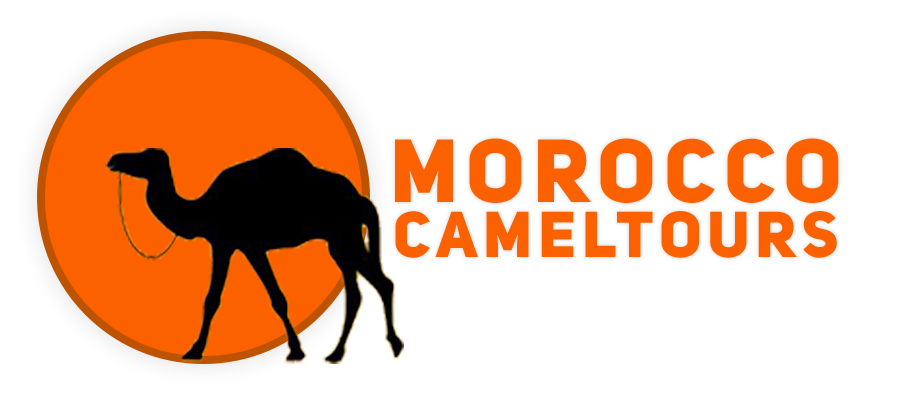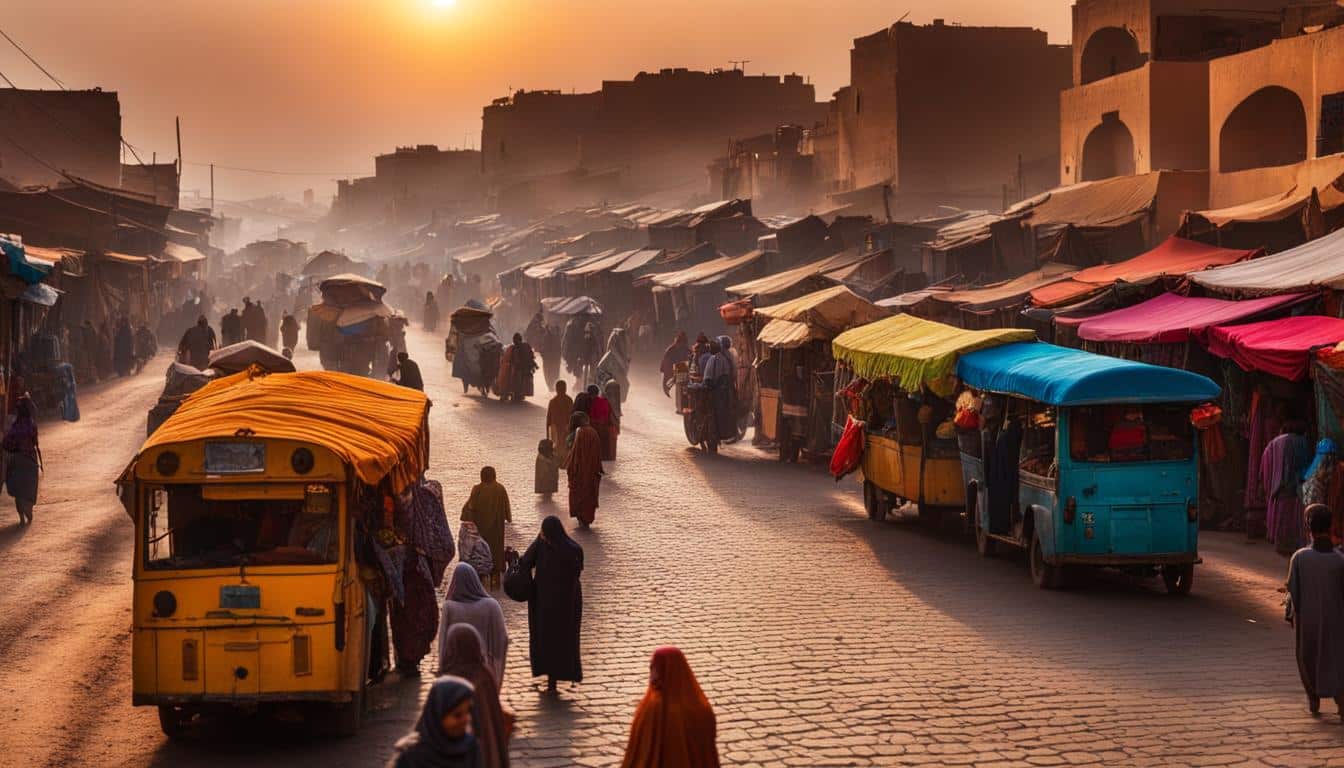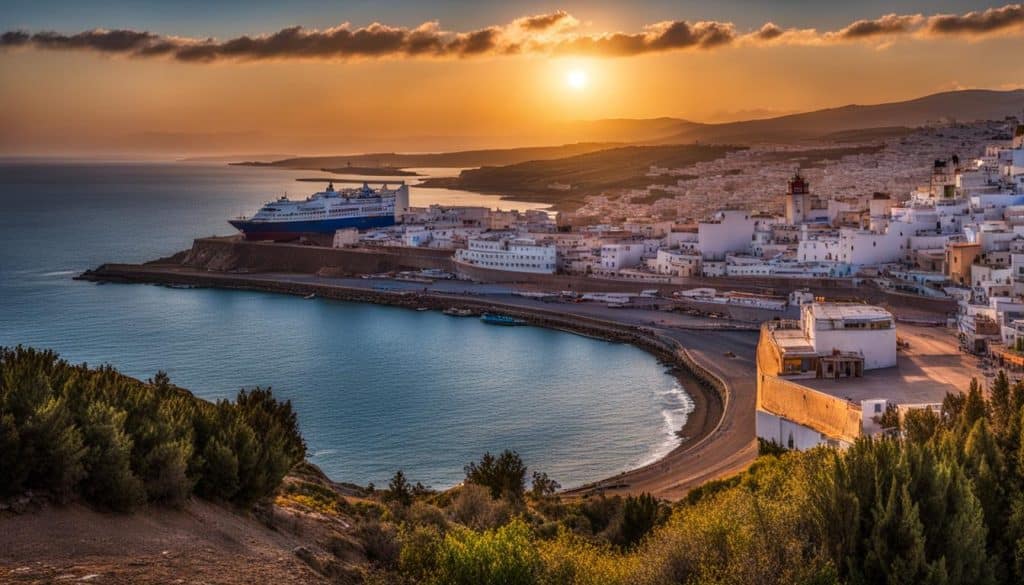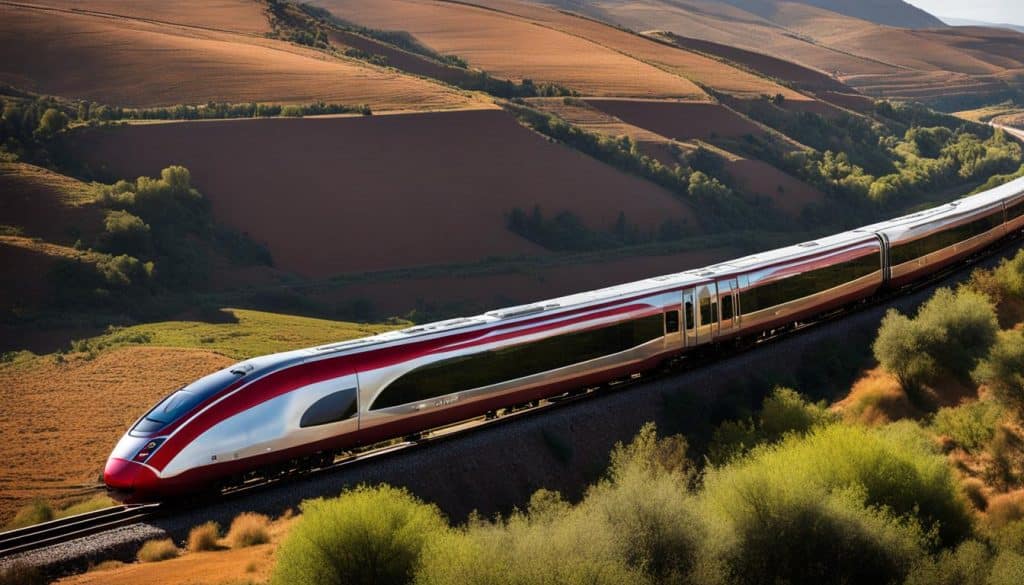How to Get Around Morocco – Recommended Routes, Travel Times & Advice
With its alluring blend of color and vitality, Morocco offers an escape unlike any other. From the pulse of its cities to the tranquility of the Sahara, travel in this North African gem balances diversity with the rhythmic flow of local life. Strategic navigation through Morocco’s multitude of transportation options ensures that your stay in this vibrant country is as smooth as it is exhilarating. Grasp the essence of its sprawling landscapes by hopscotching between destinations via reliable trains, or delve into the heart of Moroccan culture with an intimate taxi journey. Buses wind their way through bustling streets and serene countryside alike, providing a broad lens through which to witness the country’s magnetism. Adeptly navigating Morocco requires a blend of careful planning and spontaneous adventure, giving travelers the keys to unlock the very best of Moroccan life.
Whether you’re coasting along the Atlantic shores or exploring ancient cities, understanding the routes, travel times, and insider travel advice is fundamental. Ensure your expedition through Morocco is enriched with the authenticity and depth this country demands. Be it a jaunt from Marrakech to Casablanca, an exploration from Fez to the mystical dunes of the Sahara, or a serene train ride connecting Tangier and the lively markets of Marrakech, your voyage through Morocco should be nothing short of a tapestry of experiences. Let this guide be your companion in unwrapping the country’s marvels, as you maneuver through taxis, trains, and buses, embracing the flourishing sounds, sights, and flavors that only Morocco can offer.
Key Takeaways
- Understanding transportation modes is key to enhancing travel experiences in Morocco.
- Trains, taxis, and buses form the backbone of Morocco’s extensive travel network.
- Each city in Morocco offers distinct routes, contributing to diverse travel times and options.
- Tailoring travel advice to Morocco’s geography ensures seamless navigation for adventurers.
- Seasoned travelers recommend familiarizing oneself with local travel nuances for a genuine Moroccan journey.
- Planning for both structured and flexible travel in Morocco can lead to unexpected discoveries.
Embarking on Your Moroccan Adventure: Key Travel Methods
The rhythm of Morocco’s heart beats through its diverse transportation options, culminating in a symphony of travel methods to suit every explorer’s itch for adventure. Imagine the stories that await you with each mode of transit, weaving the fabric of your travels into a rich mosaic of Moroccan memories. Connect to the soul of this enchanting land through the skies, over seas, or on the serpentine allure of its roadways.
Soaring to New Heights: Catching Flights Within Morocco
When time is a luxury, and the Moroccan landscapes call, the prowess of a swift flight becomes invaluable. Domestic airlines, like Royal Air Maroc, bridge the distances between Morocco’s storied cities, revealing the country’s vastness from a bird’s-eye view. While these flights often transit through the cosmopolitan hub of Casablanca, the convenience they offer cannot be overstated, transforming day-long odysseys into mere hours.
Discovering the Art of Navigation by Sea: Ferry Routes from Europe
For those seeking a slower pace, the Mediterranean serves as a pathway for travelers emanating from Europe. Regular ferries from Spain and Gibraltar offer a maritime gateway into Morocco’s embrace. Upon the decks of these vessels, one can absorb the azure expanse, arriving with a sense of having crossed not just into a new country but into an era bygone, where the journey is just as storied as the destination.
Exploring with Flexibility: Benefits of Renting a Car
The ultimate freedom in Moroccan exploration comes from the independence a rental car affords. Transcending the bounds of timetables and set routes, travelers can chart their own course, pausing at whimsy’s whisper. Reputable rental car companies, including international brands like Hertz, Budget, Europcar, and Avis, provide the keys to unlocking hidden corners of Morocco, ensuring a personalized journey flush with flexibility and adventure.
Embarking on Your Moroccan Adventure: Navigating Public Transportation
When visiting Morocco, one is swiftly introduced to a public transportation network teeming with options to explore a landscape brimming with life and culture. The state-run ONCF (Office National des Chemins de Fer du Maroc) forms the backbone of railroad transport, stringing together key locations with a thread of rail lines that introduce travelers to the country’s iconic vistas. The trains in Morocco serve as a reliable gateway between bustling cities and tranquil destinations, bringing efficiency and comfort to Moroccan rail travel.
Supplementing the ONCF’s offerings, Supratours extends the connectivity with its network of buses, ensuring destinations beyond the reach of trains are still accessible with ease. In juxtaposition to rail and supplemental bus services, buses operated by CTM, the national bus company, offer travelers a tapestry of routes covering the length and breadth of the country. Thanks to their well-established system of numbered seating, CTM quells the traveler’s trepidation with predictability and order, a rare luxury in the winding routes of Morocco.
The local facet of Morocco’s public transport can be experienced in the bustling hive of activity surrounding the grand taxis. These collective taxis epitomize shared travel, often setting off once full and delivering a more authentic Moroccan journey. They are a pulsating vein in the heart of the public transport network, a network that presents an array of colorful scenes and interactions mere footsteps away from your chosen lodgings.
However, an itinerary centered around Moroccan public transportation, be it buses, trains or taxis, carries the wisdom of flexibility. Occasional delays are as much a part of the travel tapestry as the landscapes themselves, suggesting a deeper immersion into the ebb and flow of Moroccan life. Prepare to embrace the quirks of local transport, and you’ll find that every journey becomes an integral chapter of your Moroccan adventure narrative.
Navigating the Moroccan Railways: A Journey on Tracks
Embarking on a travel adventure across Morocco is a dream for many, and the country’s network of railways provides a fascinating way to soak in the landscapes and culture. The Moroccan railways, managed by the Office National des Chemins de Fer du Maroc (ONCF), offers an extensive rail system that traverses from the Mediterranean, through imperial cities, and towards the edges of the Sahara. For many, the journey begins with the question of how to navigate this space-efficiently while selecting the right class for a comfortable ride. Let’s delve into the details of traveling from Tangier to Marrakech and what to expect from Morocco’s high-speed train, further examining the nuances of pricing and class differences.
Traveling from Tangier to Marrakech: Routes and Timetables
The voyage from the northern port city of Tangier to the vibrant souks of Marrakech can be experienced via the main lines of Moroccan railways. These trains, notable for their comfort and relative swiftness, provide adventurers with picturesque views of Morocco’s varied terrain. Timetables and routes can be accessed online through the ONCF’s official website or at any major train station. While Morocco’s railways ensure regular departures, travelers are advised to verify the latest schedules as they plan their journey, especially during holidays or peak travel seasons.
The High-Speed Revolution: Morocco’s LGV Service
Morocco’s leap into the high-speed train era has set the stage for a faster and more efficient mode of inter-city travel. The LGV (ligne à grande vitesse) service, which is in the midst of expansion, promises to revolutionize travel between Tangier, Rabat, Casablanca, and ultimately Marrakech. This high-speed train cuts travel time significantly, setting the groundwork for Morocco to become a more accessible destination for both business travelers and tourists alike.
Understanding Pricing and Class Differences in Moroccan Trains
When it comes to pricing, Moroccan railways offer options that accommodate different budgets and preferences. Typically, the cost of a train ticket is marginally higher than bus fares, yet the convenience and comfort provided by train travel offer added value. Travelers must choose between first and second-class tickets, with the former offering a quieter environment and more space. Detailed information about various class offerings and their associated pricing can be found on the ONCF platform—allowing travelers to weigh their options and select the class that aligns with their travel needs and expectations.
The Road Less Traveled: Comfort and Cost of Moroccan Buses
For those traversing the vibrant landscapes of Morocco, Moroccan buses present a unique blend of comfort and cultural immersion. While not as rapid as some alternatives, buses deliver passengers directly into the rhythm of Moroccan life, often proving to be the most economical choice for long-distance travel. Major bus companies such as CTM, SATAS, and Trans Ghazala thread the country together, connecting secluded villages with bustling metropolises, coastlines with mountain ranges.
Central to bus travel is the gare routière or bus terminal, where adventures begin and end. These busy hubs are a microcosm of Moroccan society, a place to witness the comings and goings that define local movement. CTM, the standout provider among them, is renowned for its reliability and offers fixed departure schedules available online, which streamlines planning and alleviates concerns of unpredictability.
Passengers seeking comfort on their journeys can find solace in the fact that buses typically exceed the modest accommodations of grands taxis. Beyond just a seat, certain long-haul CTM coaches offer air conditioning, a safeguard against the intense Moroccan heat, especially rewarding during long transits. However, it’s advisable to be mindful of the sun’s position; choosing a seat away from its rays can be crucial for a more pleasant journey.
Prioritizing advanced ticket purchases, particularly for CTM and other reputable services, can transform your travel experience. Advance online bookings assure your place amidst often crowded routes, offering a sense of security in the sometimes tumultuous ebb and flow of intercity travel. As for cost considerations, while varying based on distance and provider, bus fares consistently remain in your favor in comparison to other modes of transportation in Morocco.
Furthermore, night buses rise as an intriguing option for those seeking to traverse the Moroccan terrain under the cloak of darkness. These nocturnal voyages reduce the sting of daytime heat and lend an air of tranquility to travel. They are a popular, albeit slightly more expensive, alternative to daytime bus travel, cutting through the cool Moroccan night with ease.
In summary, bus travel in Morocco competes fiercely on two fronts: cost and comfort. It champions affordability while providing a richer, albeit slower, narrative to Moroccan adventures, making bus options a must-consider for the discerning traveler.
Domestic Flights: Fast Tracking Through the Moroccan Skies
Soaring above the Moroccan skies offers a unique perspective of the country’s diverse terrain while providing an incredibly time-saving mode of travel. Whether business or leisure, domestic flights present an efficient solution to cover Morocco’s expansive geography, connecting distant points with speed and ease. Leading the charge are dependable airlines such as Royal Air Maroc and Air Arabia, which redefine air travel within the nation, offering routes that link major cities and facilitate seamless movement for travelers.
When Time is of the Essence: Choosing Air Travel
For those looking to maximize their visit by minimizing transit times, air travel within Morocco is ideal. The strategic utilization of domestic flights catapults visitors from one vibrant cityscape to another, turning what could be hours spent on the road into minutes in the air. Airlines, particularly Royal Air Maroc, take the lead in offering extensive coverage, making air travel a preferable alternative to other forms of transportation when efficiency is a priority.
Connecting Major Cities: Network and Flight Schedules
Interlinking Morocco’s major cities, from the Mediterranean coasts to the heart of the Sahara, the existing network caters to both the leisurely traveler and the brisk business executive. Flight schedules are crucial in planning a Moroccan getaway, and updates can be regularly checked on the airlines’ websites. Despite most journeys involving a transfer at the Casablanca hub, there are direct options available, simplifying the itinerary and saving precious time, such as the direct flight from Dakhla to Laayoune.
Evaluating Cost vs. Convenience for Internal Flights
While domestic flights undoubtedly offer the advantage of speed, the cost can be a decisive factor for many travelers. Comparing the expense and convenience of air travel against other transportation methods is essential for any Morocco itinerary. Although sometimes more costly, the time saved can justify the investment, especially when the alternatives mean significantly longer travel times. As such, air travel within Morocco remains an appealing choice for its convenience and the unique opportunity to gaze down at the breathtaking Moroccan landscapes from above.
Self-Driven Excursions: The How-To of Car Rentals in Morocco
For exploratory spirits craving travel independence and the thrill of self-driven excursions, car rentals in Morocco unlock a realm of possibilities. To embrace the myriad terrains across this North African expanse, from the bustling cities to the serenity of the Atlas Mountains, opting for a personal vehicle is an incomparable choice. It provides unparalleled travel flexibility, allowing adventurers to delve into the landscape at their own pace, guided by desire for discovery and adventure.
Rental agencies in Morocco cater to the needs of travelers with a variety of vehicles primed for the diverse Moroccan environment. When considering vehicle rentals, international franchises such as Hertz, Budget, Europcar, and Avis offer familiar quality and service standards, while local rental agencies present competitive pricing and insider knowledge of the most suitable vehicles for road trips within the region.
With rates commencing at about $320 per week, drivers can navigate the great Moroccan outdoors, be it along coastal roads or within the vast dunes of the Sahara. It’s crucial, however, to navigate with caution – the beauty of the land is contrasted by the necessity for vigilance due to high accident rates. It’s essential to adhere to speed limits, respect local driving customs, and ensure all documentation, such as a valid driver’s license and passport, is at hand.
Embarking on road trips in Morocco is not just about transportation; it’s about carving out your own unique path, punctuated by unpredictable adventures and personal encounters with the country’s rich tapestry. But the true essence of the journey lies in the freedom to pause, to absorb, and to witness life unfolding in the vibrant towns and peaceful landscapes – a truly authentic expression of travel independence.
Conclusion
As your Moroccan odyssey draws near, the anticipation of traversing through bustling markets and quiet desert expanses should fill you with excitement. Creating a Moroccan itinerary that captures the vibrant essence of the country is both an art and a strategy. The path you carve through Morocco’s diverse landscapes can leave you with a tapestry of memorable experiences. To ensure that your journey is both captivating and secure, keep these travel tips and transportation suggestions close at heart.
Creating Your Moroccan Itinerary: Tips for a Memorable Trip
Your travel planning for a memorable trip through Morocco should blend ambition with practicality. Factor in the majestic cities and rural outposts on your must-see list, but allow for the freedom to explore hidden gems discovered along the way. On public transportation, remain vigilant but also savor the moments that spontaneity offers. Ensure you have the correct change for taxi fares, a requirement for smooth and hassle-free travels. Equip yourself with transportation tips from locals and fellow travelers alike, always aiming for secure travel that respects the culture and pace of Moroccan life.
Staying Safe and Enjoying the Journey: Final Reminders
Safety, a cornerstone of any trip, is especially vital when enjoying Morocco. Adhering to cautious driving habits, when journeying by rental car, and staying attuned to the nuanced flow of traffic contribute to a safe passage. As you thread through this North African tapestry, absorb every moment: from the sights and sounds of the medinas to the whispers of the Sahara. Adherence to traveler’s advice can help navigate your ventures, ensuring each experience is a thread in the vibrant mosaic of your travels. Above all, adopt a spirit of joy and wonder as you embrace the journey as much as the destination itself, bringing home a mosaic of memories that echo the enchanting rhythm of Morocco.
FAQ
What are the main transportation options for getting around Morocco?
In Morocco, travelers can use a variety of transportation options including trains, buses, taxis (including grands taxis for inter-city travel), domestic flights, and rental cars. Major cities and towns are well-connected by the state-run ONCF for rail services, CTM buses, and Supratours for destinations not reached by train.
Can I rent a car to travel around Morocco?
Yes, car rentals are available in Morocco and are a viable option for those looking for flexibility in travel or planning to visit less-accessible regions. International car rental companies along with local firms offer various types of vehicles. Remember that while driving in Morocco requires caution, it provides travelers with the freedom to explore at their own pace.
How can I travel from Europe to Morocco?
Travelers can reach Morocco from Europe by air, with frequent flights to major Moroccan cities. Alternatively, ferries are available from France, Spain, and Gibraltar. Ferry travel can provide a unique and scenic approach to Morocco, integrating sea travel into the overall experience.
Is it safe to travel by public transport in Morocco?
Public transportation in Morocco is widely used, both by locals and tourists. It includes buses, trains, and taxis which are generally safe. However, it’s advised to be cautious and stay alert, especially at night or when traveling alone. Ensure you carry change for taxi fares, book bus tickets in advance, and follow local advice for a secure experience.
What is the best way to travel between Moroccan cities?
The best way to travel between cities in Morocco depends on your preferences for cost, comfort, and time. Trains offer a comfortable and swift inter-city service, while CTM buses are reliable and usually more affordable. For long distances or if pressed for time, domestic flights can be a convenient option, albeit more expensive.
Are there high-speed trains in Morocco?
Morocco hosts the first high-speed train service in Africa, known as the LGV (Ligne à Grande Vitesse), which connects Tangier and Casablanca in approximately 2 hours. Further expansion plans aim to extend the service to other major cities like Marrakech in the future.
How do I find bus or train schedules for travel within Morocco?
Bus and train schedules can be found and tickets can be booked online via the official websites of ONCF for trains and CTM for buses. Schedules and tickets are also available at their respective stations. It’s recommended to check the latest schedules in advance, especially during peak travel times or national holidays.
What are grands taxis?
Grands taxis are a form of shared taxi in Morocco that operates between towns and cities. They are typically larger cars that depart once full and can be a cost-effective way to travel longer distances. Rates might be fixed or require some negotiation, and they offer a more local travel experience.
How much does it cost to travel by public transportation in Morocco?
Costs vary depending on the mode of transport and distance. Trains and buses are generally inexpensive by Western standards, with prices for trains slightly higher than buses. Taxi fares are usually negotiated before the trip. Domestic flights are the most expensive but save a lot of time on longer routes.
Is it advisable to buy Moroccan train and bus tickets in advance?
While not always necessary, it’s advisable to book train tickets in advance, especially during peak travel periods such as holidays and festivals. For popular long-distance bus routes, pre-booking can ensure that you secure a seat. Tickets can be purchased online, at bus and train stations, or through travel agencies.
Source Links
- https://www.roughguides.com/morocco/getting-around/
- https://www.lonelyplanet.com/articles/getting-around-morocco
- https://www.frommers.com/destinations/morocco/planning-a-trip/getting-around





Leave A Comment